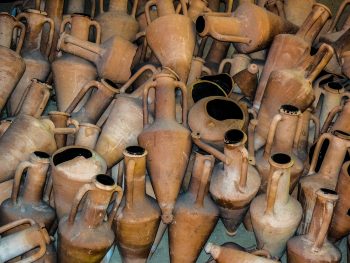Our beautiful 2024 Sauvignon Blanc was bottles yesterday. And we’re so happy to have it back on our list.
Don’t miss an email I sent out on Tuesday for a very special deal on this new release.
And if you need any convincing, here’s what you’re in for…
VERY gently pressed fruit to make sure to have only the softest of Sauvignon Blanc juice. Press the grapes for too long and the rougher tannins from the skins will start to affect that utterly moreish softness. It’s a delicate operation to know when to stop pressing the fruit and Rob himself is at that press cut tasting the juice every few minutes so that he knows how early to stop extracting.
Tempting to press hard to get all of the juice you can in terms of yield, but the result would be nothing like the signature Somerled Sauvignon Blanc.
Mouthwatering acid is a feature of all of Rob’s SBs given that he picks the fruit so early that the natural acid is still very much alive.
Far from being an aggressive SB in style, this is a wine with scrumptious acid and bounteous, gentle passionfruit on the nose and an enviably elegant palate. Do dive in!
This got me thinking about bottles. And how we got to deciding that they were the best thing to package wine into. Join me as I take a look at the history of wine storage and packaging…
Ancient Times
Amphorae
 In ancient civilisations such as Greece, Rome, and Egypt, wine was stored in large clay vessels called amphorae. These vessels had narrow necks and two handles for easy transportation. Amphorae were often sealed with resin or clay stoppers to prevent oxidation and spoilage.
In ancient civilisations such as Greece, Rome, and Egypt, wine was stored in large clay vessels called amphorae. These vessels had narrow necks and two handles for easy transportation. Amphorae were often sealed with resin or clay stoppers to prevent oxidation and spoilage.
Benefits:
- Made from readily available materials
- Sealed to protect against air exposure
- Easy to transport and store
Medieval Period
Barrels
During the medieval period in Europe, wooden barrels became the primary method for storing and transporting wine. Barrels, typically made from oak, allowed for easier handling and movement of large quantities of wine. And as we know, they imparted unique flavours into the wine through the wood.
Benefits:
- Durable and easier to handle
- Contributed to the aging process
- Allowed for large-scale storage
Stoneware and Ceramic Jugs
In addition to barrels, smaller quantities of wine were often stored in stoneware and ceramic jugs. These were more practical for household use and local distribution.
Renaissance to 18th Century
Glass Bottles and Cork Stoppers
The Renaissance brought significant advancements in glassmaking, and by the 17th century, glass bottles became more common for wine storage. The use of cork stoppers, sourced from the bark of cork oak trees, revolutionized wine storage by providing a reliable seal that prevented oxidation and allowed wines to age gracefully.
Benefits:
- Improved aging potential
- Better protection from air exposure
- Easier to store and transport in smaller quantities
19th Century
Standardization of Wine Bottles
The 19th century saw the standardisation of wine bottles in terms of shape and size. In particular the 750ml bottle that is still widely used today. This standardisation helped with storage and transport logistics and facilitated the commercial wine trade.
If you’d like to learn more about wine bottles shapes and sizes, have a read of this past blog.
Cellars and Wine Racks
During this period, dedicated wine cellars and racks became popular for storing wine bottles. These environments provided the ideal conditions for aging wine, including consistent temperature, humidity, and protection from light.
20th Century to Present
Introduction of Alternative Packaging
The latter half of the 20th century and the early 21st century have seen a proliferation of alternative wine packaging, driven by convenience, cost, and environmental concerns.
Among others, these include:
- Bag-in-Box
- Tetra Pak
- Cans
- Pouches and Kegs
Let’s come back to these next week and I’ll expand on all the options for alternate packaging (and why they haven’t made a massive dent in the glass bottle market… yet).
Modern Wine Cellars and Climate-Controlled Storage
Today, many wine enthusiasts use advanced climate-controlled storage solutions, including wine coolers and professional wine storage facilities, to ensure their collections remain in optimal condition.
Is that you? We’d love to see a photo of where you store your wine(even if it’s just in your spare room cupboard – we can’t all have climate-controlled rooms!). Email me and I’ll make sure you get a special mention in next week’s blog!
